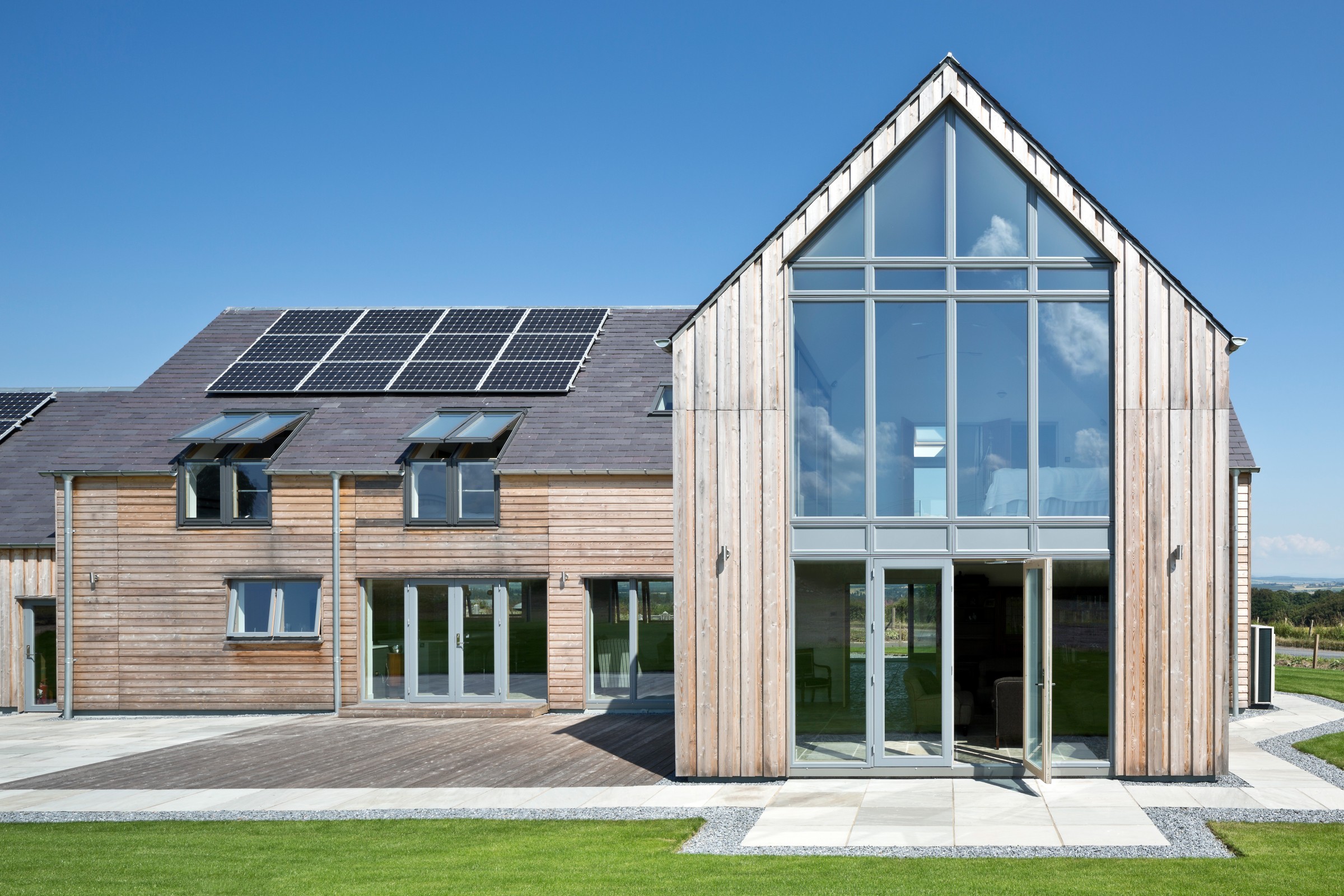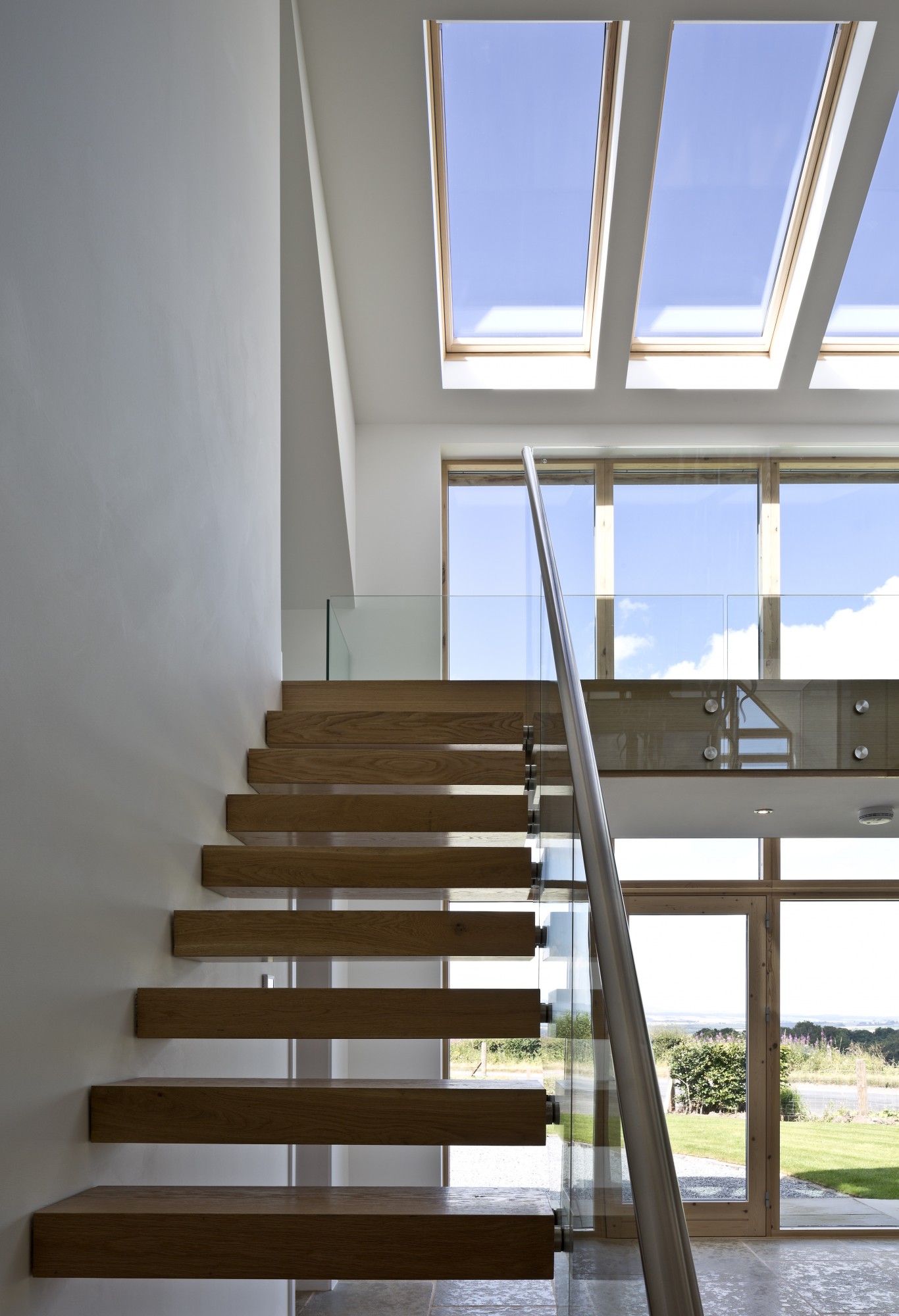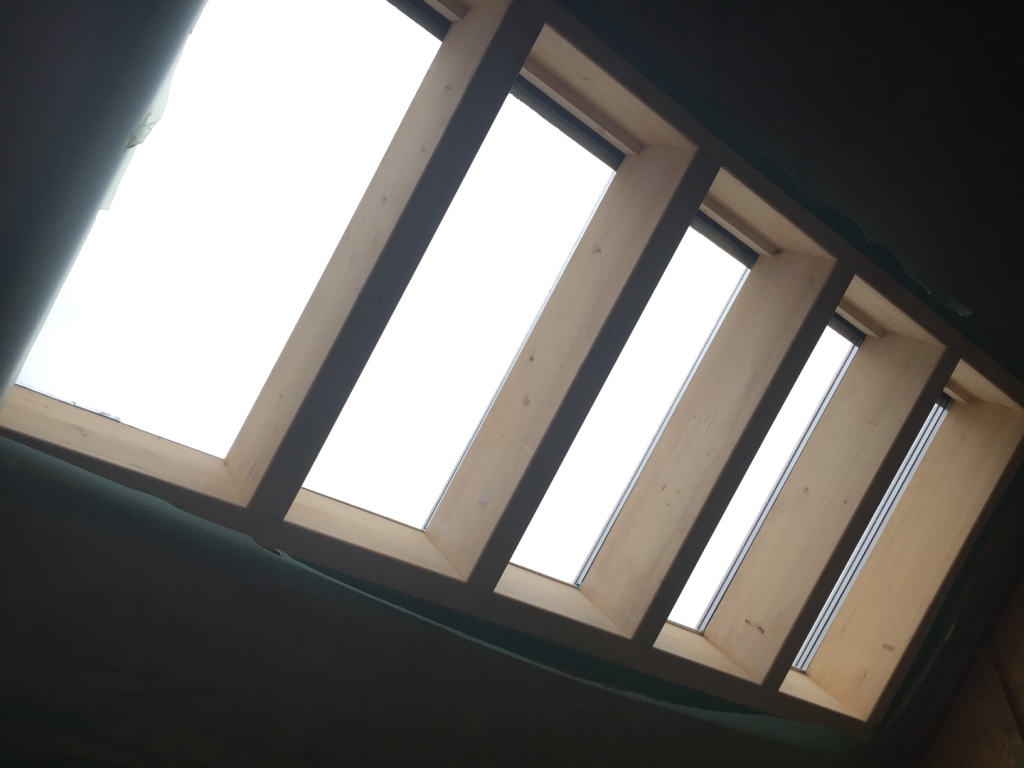It’s a question we are often asked by our Self Builders, and it can be a tricky one to answer; do I need triple glazing? The answer depends on the type of project you are undertaking, not to mention your budget, so it’s best to take a look at some of the key project aspects before making your decision.
To help give some thorough insight into the costs, benefits and functions of triple glazing, we put our questions to Mark McLean, Internorm specialist for Scotia Ltd.
SO, WHO ARE SCOTIA, AND WHERE ARE YOU BASED?
Scotia were formed in 1983 and for over 30 years we have been at the forefront of the fenestration industry in Scotland.
Based in Kilmarnock, with offices in Hamilton, Glasgow, and another soon to be opened in the central Belt, Scotia initially set out its stall designing, producing and installing double glazed UPVC windows for the domestic market place.
Scotia are now one of the biggest window producers in the UK, supplying glazed units to most of the UK’s leading house builders nationwide.
With the development of the market place in the UK for greater improved housing stock, a demand for further reduced U Values – and a greater awareness of Passive House (Passivhaus) technologies and SIPS construction – Scotia were keen to diversify.
Building on our already vast knowledge of the construction industry, and our installation experience, we are now the sole distributor of Internorm Windows in Scotland – Europe’s leading supplier of Energy Efficient Triple glazed composite window systems.

WHAT INITIAL CONSIDERATIONS SHOULD SELF BUILDERS MAKE WHEN CHOOSING WINDOWS AND DOORS?
Self Build clients, from our experience, can be split into 3 categories:
- Those who focus on Aesthetics
- Those who focus on U Value and Thermal Performance
- Those who focus on Budget
In our eyes, all of the above are equally important, so our main words of advice to Self Builders would be: do your research!
There are literally hundreds of systems available in the UK now and on paper they can all look similar. However, nothing beats hands on experience; visiting showrooms, looking, feeling and playing with the product is the only way to decide if a window is truly right for your project.
By being hands on, you can then make real “apples for apples” comparisons between products, as well as advice and support that various suppliers and companies will offer.
In order to make sure that all the boxes you want are being ticked, focus on the specifics. This will make sure that any quotes you receive are accurate – and it will eliminate products from the offset that may be too expensive, or simply do not meet your requirements. We ask our clients to supply the following:
- Provide an accurate window schedule to scale with dimensions
- Know the specific colour that you would like to have on the outside
- Know the specific colour that you want to have on the inside
- Ask if the product is independently tested, with proof of certification
- Know what U Value you require or would like to achieve (your architect will be able to offer advice on this)
- Highlight what’s important for you: Is it the performance aspect?; Do you really want to have timber inside?; Do you require special glass that reduces noise pollution?
- Are you looking for full installation or supply only? (Remember a window is only as good as the hole it goes into, so it sometimes pays to have the support of a full installation service)
- Finally – and this is sometimes controversial – be open and honest about your budget. There are lots of different products out there – although they look the same, some vary massively in terms of performance and budget. Give your prospective supplier a ball park figure that you are working to; if the supplier is honest and reputable, they should do what they can to ensure you get the most spec for your money.
Many think that triple glazing is still a “fad”, however, I have exclusively sold triple glazed window and doors and specified them for just over 7 years now. Year on year, enquiries have grown and year on year the number of installations we complete rises, so firstly I would say that the benefits are real and proven.
In Austria (Internorm’s parent country and biggest marketplace), almost all of the windows installed are triple glazed. The UK is a bit further behind just now, but we are the fastest growing marketplace.
We see the main benefits of triple glazing being the following:
- Greater levels of insulation (Av. 0.9 even on our most basic of systems)
- Greater level of sound reduction
- More Glass = More Light; due to glass development over the past 10 years, glass units are becoming bigger and bigger. With triple glazing and more robust frames, we can achieve far bigger windows than can be achieved using standard domestic double glazed units.
- Future-proofing your investment: houses are like computers or smartphones – technology develops and homes become more and more efficient. With rising energy costs becoming a bigger factor in housing running costs, and people being made more aware of the energy performance of homes, it pays to show how energy efficient your home is. With over 35% of a building’s heat being lost through the windows, it’s one of the single biggest factors you can alter to improve your home’s thermal performance and maintain the building’s value.

IS IT EXPENSIVE TO INTEGRATE TRIPLE GLAZING? WHAT SORT OF COSTS ARE INVOLVED?
In short – Yes!
Triple glazing is more expensive than standard double glazing windows, but it’s important to reiterate the “apples for apples”, or “like for like”, scenario.
When comparing a standard UPVC/UPVC, White/White double glazed, A-rated window, with a U Value of 1.3/1.4 – against a triple glazed White/White, UPVC/UPVC window, we would estimate the cost to be around 12-16% higher.
That said, it’s then important to look at the benefits that additional cost will offer you, and consider: what will the savings be over the lifetime of the window? What’s the warranty that’s offered? Will you recoup the savings in lower energy costs etc.?
HAVE YOU WORKED WITH MANY SELF BUILDERS IN THE PAST, AND ARE YOU BEGINNING TO SEE A TREND IN PEOPLE TURNING TO TRIPLE GLAZING?
As I said before, I have worked exclusively with triple glazing for just over 7 years now, with around 90% of our business being the domestic Self Build marketplace, and we have noticed sales and enquiries rise year on year since 2008/09.
People are definitely becoming more aware of the “fabric first approach” in terms of spending a good proportion of the build budget primarily on the kit, windows and doors.
If you get these elements right, you then can look at alternative heating solutions like biomass, solar thermal, MVHR, ground and air source heat pumps. Good windows, and low U Values, are the first link in the chain to building a more energy efficient and affordable home.
HOW DOES YOUR DESIGN PROCESS WORK? DO YOU WORK WITH ARCHITECTS FROM AN EARLY STAGE?
Most of the staff that work on the Internorm side of the business come from an architectural background – I myself am an architectural technician. We have developed our skill set specifically, to focus on the technical aspects of the products, assisting the architect and meeting the needs of our clients and contractors.
We approach our projects very much like an architect would, focusing on design and technicalities of the product first.
Because of this, we always encourage working with architects almost at planning stage. That way we can iron out any foreseeable issues, and it also gives us a better opportunity to cost engineer projects from the outset; advising what is possible, what is not possible, and more importantly, how much something costs and why.
At each stage, we work with detailed AutoCAD sections, which can provide BIM support, and offer advice on how we think the window installation should be executed. Always focusing on the end result, this process ensures that the window is as good as the hole it goes into.

IN TERMS OF GLAZING, WHAT WOULD BE YOUR TOP 5 TIPS FOR SELF BUILDERS LOOKING TO CREATE A HIGH-PERFORMANCE, THERMALLY-EFFICIENT HOME?
- Know what’s important to you; aesthetics, performance, cost, or all of the aforementioned and stick with your decision.
- If you have the budget always go for triple glazing
- Keep windows below 2.4m in height; this ensures a more consistent and lower U Value, and greater cost control
- Think about mixing and matching profiles; use UPVC in wet areas and timber in public or feature areas – this means you can spend more on specification and get a better overall performance for a lower budget.
- When budget allows, insist on a full installation service by the supplier, and look at installing with “compri-band” and “airtightness tapes” (your architect can offer advice on this) to ensure that you are getting the best possible performance out of your product.
We’d like to thank Mark and Internorm by Scotia for their fantastic contribution to ACA’s blog this week. If you’d like more information on getting your window schedule in order, get in touch today!


